Related Research Articles

Darlington is a market and industrial town in County Durham, England. It is the main administrative centre of the unitary authority Borough of Darlington. The borough is a constituent member of the devolved Tees Valley area.
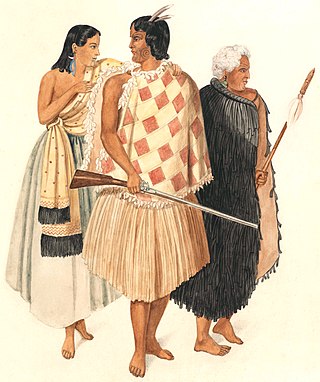
New Zealand flax describes the common New Zealand perennial plants Phormium tenax and Phormium colensoi, known by the Māori names harakeke and wharariki respectively. Although given the common name 'flax' they are quite distinct from the Northern Hemisphere plant known as flax .

The history of the telescope can be traced to before the invention of the earliest known telescope, which appeared in 1608 in the Netherlands, when a patent was submitted by Hans Lippershey, an eyeglass maker. Although Lippershey did not receive his patent, news of the invention soon spread across Europe. The design of these early refracting telescopes consisted of a convex objective lens and a concave eyepiece. Galileo improved on this design the following year and applied it to astronomy. In 1611, Johannes Kepler described how a far more useful telescope could be made with a convex objective lens and a convex eyepiece lens. By 1655, astronomers such as Christiaan Huygens were building powerful but unwieldy Keplerian telescopes with compound eyepieces.

Sir Richard Arkwright was an English inventor and a leading entrepreneur during the early Industrial Revolution. He is credited as the driving force behind the development of the spinning frame, known as the water frame after it was adapted to use water power; and he patented a rotary carding engine to convert raw cotton to 'cotton lap' prior to spinning. He was the first to develop factories housing both mechanised carding and spinning operations.
Ignatius Bonomi (1787–1870) was an English architect and surveyor, with Italian origins by his father, strongly associated with Durham in north-east England.

John Dollond was an English optician, known for his successful optics business and his patenting and commercialization of achromatic doublets.
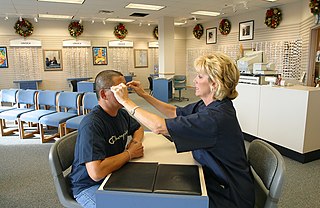
An optician is an individual who fits eyeglasses or contact lenses by filling a refractive prescription from an optometrist or ophthalmologist. They are able to translate and adapt ophthalmic prescriptions, dispense products, and work with accessories. There are several specialties within the field.
T. Cooke & Sons was an English instrument-making firm, headquartered in York. It was founded by Thomas Cooke by 1837.

Jesse Ramsden FRS FRSE was a British mathematician, astronomical and scientific instrument maker. His reputation was built on the engraving and design of dividing engines which allowed high accuracy measurements of angles and lengths in instruments. He produced instruments for astronomy that were especially well known for maritime use where they were needed for the measurement of latitudes and for his surveying instruments which were widely used for cartography and land survey both across the British Empire and outside. An achromatic eyepiece that he invented for telescopes and microscopes continues to be known as the Ramsden eyepiece.
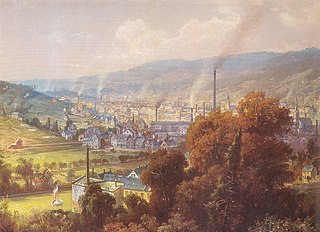
Textile manufacture during the British Industrial Revolution was centred in south Lancashire and the towns on both sides of the Pennines in the United Kingdom. The main drivers of the Industrial Revolution were textile manufacturing, iron founding, steam power, oil drilling, the discovery of electricity and its many industrial applications, the telegraph and many others. Railroads, steamboats, the telegraph and other innovations massively increased worker productivity and raised standards of living by greatly reducing time spent during travel, transportation and communications.
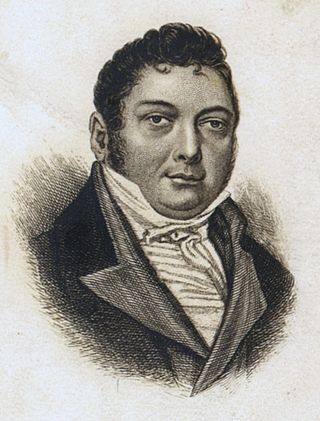
Matthew Murray was an English steam engine and machine tool manufacturer, who designed and built the first commercially viable steam locomotive, the twin-cylinder Salamanca in 1812. He was an innovative designer in many fields, including steam engines, machine tools and machinery for the textile industry.
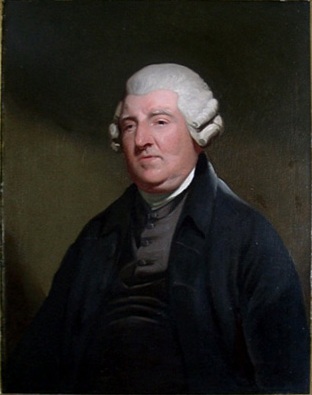
Peter Dollond was an English inventor of optical instruments. He was the son of optician John Dollond. He is known for his successful optics business, and for the invention of the apochromat.

Riedel Crystal is a glassware manufacturer based in Kufstein, Austria, best known for its glassware designed to enhance different types of wines. According to Petr Novy, Chief curator Museum of Glass and Jewellery in Jablonec nad Nisou, Czech Republic, Riedel is the oldest family owned and operated global crystal glass brand worldwide. Established in Bohemia in 1756, the company is managed by Georg Riedel and Maximilian Riedel. Later, it was re-established by Claus J. Riedel in 1956, with the support of the Swarovski family.

Thomas Rudolphus Dallmeyer, English optician, was the son of John Henry Dallmeyer who ran an optics business. His maternal grandfather, Andrew Ross, was himself the first English photographic optician.
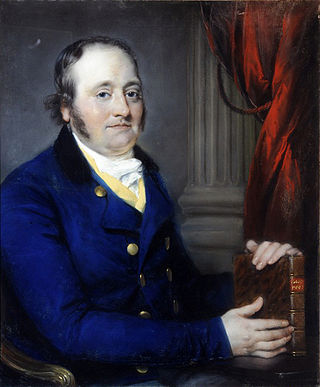
John Marshall was a British businessman and politician from Leeds, West Yorkshire, England.
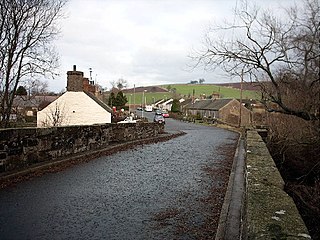
Douglastown is a hamlet in Kinnettles in Angus, Scotland, three miles south-west of Forfar. It takes its name from the landowner who in about 1789 provided land for James Ivory & Co. to build a flax mill to spin yarn for heavy linen cloth called osnabruks (named from the German town of Osnabruk, where it was originally made. The hamlet of Douglastown was built to house the workers. The mill closed in 1834. It used flax-spinning technology invented by John Kendrew and Thomas Porthouse of Darlington, patented in 1787.

Flax mills are mills which process flax. The earliest mills were developed for spinning yarn for the linen industry.

John Dobbin was an English landscape painter, the son of John and Elizabeth who lived in Weaver's Yard. John, the son, did not follow the same trade as his father, who was a weaver working in Pease's Mill in Darlington town centre, but was apprenticed instead to a cabinet-maker in Grange Road. He was not happy with this choice of career and in his twenties left for London to become an artist.
Taylor Wordsworth and Co was one of the leading producers of machinery for the flax, wool and worsted industries in Leeds, Yorkshire during the British Industrial Revolution. It was established in 1812 and survived until it was taken over in the 1930s.

The Skerne Bridge is a railway bridge over the River Skerne in Darlington, County Durham. Built in 1825 for the Stockton and Darlington Railway, it carried the first train on the opening day, 27 September 1825. It is still in use, being the oldest railway bridge in continuous use in the world. It is a Grade I listed building.
References
- ↑ O. Gregory, A Treatise of Machanics, vol 2, (London 1806), 511; J.Nicholson, The Operative mechanic, (London 1825), 405; A. J. Warden, The linen trade: ancient and modern (1864; repr. 1967), 690-92; B.Barber, 'John Kendrew & Company, Flax Spinners, 1787-1794', Cleveland History no. 32 (1976/77), 1-3.
- ↑ D.J.Bryden, 'The Ribrights, Opticians in the Poultry, London: and the use of powered machinery for working lenses and mirros at Tewin (Herts), Bromley (Kent) and Darlington (Co. Durham), Bulletin of the Scientific Instrument Society, No 105, (2010), 10-21.